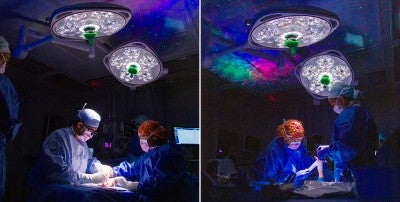
Wide-awake local anesthesia no tourniquet (WALANT) hand surgery is one of the hottest topics in orthopedics today.
This surgical approach relies on a local anesthetic (such as lidocaine) to prevent pain and a hemostatic agent (such as epinephrine) to control bleeding without the discomfort of a tourniquet.
WALANT hand surgery is available at Lehigh Valley Health Network (LVHN)–Tilghman, one of LVHN’s hospitals dedicated solely to orthopedics, as well as other LVHN locations in the Lehigh Valley. Many common hand procedures can be performed this way, like:
- Trigger finger releases
- Tendon repairs
- Fracture fixation, in certain cases
- Carpal tunnel
- Cubital tunnel
- And many more

